

Hỗ trợ trực tuyến Fb www.facebook.com/DayKemQuyNh Mobi/Zalo 0905779594 Tài liệu chuẩn tham khảo Phát triển kênh bởi Ths Nguyễn Thanh Tú Đơn vị tài trợ / phát hành / chia sẻ học thuật : Nguyen Thanh Tu Group GIÁO ÁN TIẾNG ANH LỚP 6 FRIENDS PLUS CHÂN TRỜI SÁNG TẠO THEO CÔNG VĂN 5512 (2 CỘT) NĂM HỌC 2021-2022 (HK2) WORD VERSION | 2023 EDITION ORDER NOW / CHUYỂN GIAO QUA EMAIL TAILIEUCHUANTHAMKHAO@GMAIL COM GIÁO ÁN MÔN TIẾNG ANH FRIENDS PLUS Ths Nguyễn Thanh Tú eBook Collection vectorstock com/7952556
Week : Date of preparing:
Period: Date of teaching:
PROGRESS REVIEW 3
I./. OBJECTIVES
1. Knowledge: By the end of the lesson, students will be able torevise the language they have studied from Unit 5.

2. Skills: Reading, listening, writing, speaking.
3. Attitude: Students know how to learn English in right way.
4. Competence: Communication, self-learning capability, creative capacity, ability to use of language……
II./. PREPARATION
1.Teacher: textbook,lessonplan, TV
2.Students: students books, notebooks
III./. TEACHING METHODS
Communicative approach, group Ss and T’s activities, play as a character, teaching methods with game, teaching methods by visual, teaching methods by practicing, discussion group, technical present….
IV./.PROCEDURE
1.Check –up: During the lesson
2.New lesson:
Teacher’s and Students’ activities Contents
ACTIVITY 1: WARM-UP
v Aims: Checkstudents’understanding about the knowledge of Unit 5.
v Contents: Students do the exercises individually.
v Products: Students’ answer.
v Organization:
-Teacher allows students have time to do the exercises from 1 to 7.
-Students do the task individually.
ACTIVITY 2: KNOWLEDGE FORMATION
v Aims: Revise the language they have studied in Unit 5.
v Contents: Students work in individual.
v Products: The knowledge they have studied in Unit 5.
v Organization:
-Teacher asksstudents to retellthe knowledge from Unit 5.
-Students answer.
I. Theory 1. Vocabulary
-Food.
DẠYKÈMQUYNHƠNOFFICIAL
- Adjectives: Health.
-Teacher writes down onthe board and explainsagain if necessary.
2. Language focus
-Some, any, much, many and a lot of
-Students listen carefully and copy down into their notebooks.
ACTIVITY 3: PRACTICE
v Aims: Help students understand their knowledge deeply.
v Contents: Students work in pairs.
v Products:
v Organization:
-Teacher asks students to exchange the answers with partner.
-Students share their thinkingand check the answerswith their partner.
-Teachers check the answersagainwith class.
-Countable and uncountable nouns
II. Exercises VOCABULARY: Food
1. Complete the words in the texts.
Suggested answers
1. egg
2. bacon
3. juice
4. fruit
5. apple
6. salad
7. vegetables
8. cheese
9. burgers
10. chips
READING: Sumo style
2.Complete the text with the words.
Suggested answers
1. enormous
2. train
3. dish
4. bowls
5. vitamins
6. desserts
LANGUAGE FOCUS:
-Some, any, much, many and a lot of
-Countable and uncountable nouns
3. Choose the correct words.
Suggested answers
1. c -many
2. a -any
3. b -a lot of
4. b -much
5. a -any
6. a -some
VOCABULARY AND LISTENING:
Adjectives: Health
DẠYKÈMQUYNHƠNOFFICIAL
4. Listen and draw lines from names 1–7 to people a–g in the picture.
Suggested answers 1.
LANGUAGE FOCUS: Verb + -ing
5. Write sentences using the verbs.
Suggested answers
1. loves playing
2. hates getting up
3. like helping
4. don’t mind living
5. don’t like running
6. prefers eating
7. doesn’t like swimming
8. don’t mind doing
ACTIVITY 4:PRODUCTION
v Aims: Teacher helps students consolidate the lesson.
v Contents: Students work in individually.
v Products: Students’ evaluation
v Organization:
-Teacher summariesthe lesson for students and ask students to evaluate their comprehesion by themselves.
-Students do as directed.
-Teacher asks students to show their evaluation in front of the class.
SPEAKING: In a café
6.Put the dialogue in the correct order. Number the sentences.
Suggested answers a
WRITING: A food blog
7.Choose the correct words and complete the text.
Suggested answers
1. c, First
2. b, tasty
3. c, After
4. a, to make
5. b, great
6. c, Finally
ACTIVITY 5. HOMEWORK
-Prepare new lesson
7. b, many
8. a, Enjoy
DẠYKÈMQUYNHƠNOFFICIAL
a 2. e 3. c 4. g 5. b6. f 7. d
-3 b -8 c -1 d -4
-7 f -6 g -9 h -2 i –5
e
Week : Date of preparing:
Period: Date of teaching:
PROGRESS REVIEW 3(Cont’)

I./. OBJECTIVES
1. Knowledge: By the end of the lesson, students will be able to revise the language they have studied from Unit 6.

2. Skills: Reading, listening, writing, speaking.
3. Attitude: Students know how to learn English in right way.
4. Competence: Communication, self-learning capability, creative capacity, ability to use of language……
II./. PREPARATION
1. Teacher: textbook, lesson plan, TV
2. Students: students books, notebooks
III./. TEACHING METHODS
Communicative approach, group Ss and T’s activities, play as a character, teaching methods with game, teaching methods by visual, teaching methods by practicing, discussion group, technical present….
IV./. PROCEDURE
1. Check –up: During the lesson
2. New lesson:
Teacher’s and Students’ activities Contents
ACTIVITY 1: WARM-UP
v Aims: Check students’ understanding about the knowledge of Unit 6.
v Contents: Students do the exercises individually.
v Products: Students’ answer.
v Organization:
-Teacher allows students have time to do the exercises from 8to 14.
-Students do the task individually.
ACTIVITY 2: KNOWLEDGE FORMATION
v Aims: Revise the language they have studied in Unit 6.
v Contents: Students work in individual.
v Products: The knowledge they have studied in Unit 6.
v Organization:
-Teacher asks students to retell the knowledge from Unit 6.
-Students answer.
I. Theory
1. Vocabulary
-Sports.
-X games.
2. Language focus
-There was(n't), there were(n't)
-Was(n't), were(n't)
-Past simple: affirmative
-Past time expressions
II. Exercises
VOCABULARY: Sports
8.Complete the words.
DẠYKÈMQUYNHƠNOFFICIAL
-Teacher writes down into the board and explain again if necessary.
Suggested answers
1. hockey
-Students listen carefully and copy down into their notebooks.
ACTIVITY 3: PRACTICE
v Aims: Help students understand their knowledge deeply.
v Contents: Students work in pairs.
v Products:
v Organization:
-Teacher asks students to exchange the answers with partner.
-Students share their thinking and check the answers with their partner.
-Teachers check the answers again with class.
2. athletics
3. team
4. Olympic
5. cycling
6. championship
7. Skiing
8. football
READING: The Olympics then and now
9. Complete the sentences with the correct form of the words.
Suggested answers
1. medallist
2. winner
3. spectator
4. competitor
5. swimmer
LANGUAGE FOCUS:
-There was(n't), there were(n't)
-Was(n't), were(n't)
10.Complete the sentences with the words.
Suggested answers
1. There weren’t
2. weren’t
3. was
4. There were
5. There was
6. were
7. There wasn’t
8. wasn’t
VOCABULARY AND LISTENING:
-X games
11. Listen and write True or False
Suggested answers
1. False
2. False
3. True
4. True
5. False
6. True
DẠYKÈMQUYNHƠNOFFICIAL
LANGUAGE FOCUS:
-Past simple: affirmative
-Past time expressions
12.Complete the sentences using the past simple form of the verbs.
Suggested answers
1. watched
2. swam
3. travelled
4. became
5. scored
6. competed
ACTIVITY 4: PRODUCTION
v Aims: Teacher helps students consolidate the lesson.
v Contents: Students work in individually.
v Products: Students’ evaluation
v Organization:
-Teacher summaries the lesson for students and ask students to evaluate their comprehesion by themselves.
-Students do as directed.
-Teacher asks students to show their evaluation in front of the class.
SPEAKING: Last weekend
13. Complete the dialogue with the words. There are four extra words.
Suggested answers
1. How
2. was
3. went 4. good 5. were 6. news
7. with 8. don’t
9. when
WRITING: A sports star
14.Order the words to make sentences.
Suggested answers
1. Andy Murray’s full name is Andrew Baron Murray.
2. He’s a tennis player from Scotland.
3. He was born on 15th May 1987.
4. Murray first competed in tennis matches when he was at school.
5. At the age of 17 he won the Junior US Open.
6. He won a gold medal at the Olympics.
ACTIVITY 5. HOMEWORK
-Prepare new lesson .
7. He’s one of the most successful British tennis players.
DẠYKÈMQUYNHƠNOFFICIAL
Week : Date of preparing:
Period: Date of teaching:
PROGRESS REVIEW 4
I./. OBJECTIVES
1. Knowledge: By the end of the lesson, students will be able torevise the language they have studied from Unit 7.
2. Skills: Reading, listening, writing, speaking.
3. Attitude: Students know how to learn English in right way.

4. Competence: Communication, self-learning capability, creative capacity, ability to use of language……
II./. PREPARATION
1.Teacher: textbook,lessonplan, TV
2.Students: students books, notebooks
III./. TEACHING METHODS
Communicative approach, group Ss and T’s activities, play as a character, teaching methods with game, teaching methods by visual, teaching methods by practicing, discussion group, technical present….
IV./.PROCEDURE
1.Check –up: During the lesson
2.New lesson:
Teacher’s and Students’ activities Contents
ACTIVITY 1: WARM-UP
v Aims: Checkstudents’understanding about the knowledge of Unit 7.
v Contents: Students do the exercises individually.
v Products: Students’ answer.
v Organization:
-Teacher allows students have time to do the exercises from 1 to 7.
-Students do the task individually.
ACTIVITY 2: KNOWLEDGE FORMATION
v Aims: Revise the language they have studied in Unit 7.
v Contents: Students work in individual.
v Products: The knowledge they have studied in Unit 7.
v Organization:
-Teacher asksstudents to retellthe knowledge from Unit 7.
-Students answer.
I. Theory
1. Vocabulary
-Describing people.
-Life events.
2. Language focus
DẠYKÈMQUYNHƠNOFFICIAL
- Past simple tense:
-Teacher writes down onthe board and explainsagain if necessary.
-Students listen carefully and copy down into their notebooks.
+ affirmative + negative + questions
ACTIVITY 3: PRACTICE
v Aims: Help students understand their knowledge deeply.
v Contents: Students work in pairs.
v Products:
v Organization:
-Teacher asks students to exchange the answers with partner.
-Students share their thinkingand check the answerswith their partner.
-Teachers check the answersagainwith class.
II. Exercises
VOCABULARY: Describing people
1. Complete the words.
Suggested answers
1. height; tall
2. curly; blonde
3. green; light
4. bald; black
5.overweight; slim
6. round; glasses
READING: Childhood photos
2.Complete the sentences using the past simple form of the verbs.
Suggested answers
1. had
2. took
3. grew; changed
4. collected; made
5. gave
LANGUAGE FOCUS: Past simple tense:affirmative and negative
3. Write affirmative and negative sentences using the past simple.
Suggested answers
1. I saw a nice photo of you.
2. We didn’t enjoy that boring film.
3. She taught her grandmother about computers.
4. You ate a big pizza lastnight.
5. He didn’t read that old book.
VOCABULARY AND LISTENING:
Life events
4. Listen and choose the correct answers.
Suggested answers
1. b, south
2. c, oldest
3. c, chocolate
4. b, an artist
DẠYKÈMQUYNHƠNOFFICIAL
5. c, 1997
LANGUAGE FOCUS:
Past simple tense: questions
5. Complete the questions using the words.
Suggested answers
1. did you eat
2. Did you revise
3. Did Anna play
4. did your friends watch
5. did your sister go
6. Did you listen
SPEAKING: Role-play: an interview with a famous person
ACTIVITY 4:PRODUCTION
v Aims: Teacher helps students consolidate the lesson.
v Contents: Students work in individually.
v Products: Students’ evaluation
v Organization:
-Teacher summariesthe lesson for students and ask students to evaluate their comprehesion by themselves.
-Students do as directed.
-Teacher asks students to show their evaluation in front of the class.
6.Read the dialogue and choose the best answer. Write a letter (A–H) for each answer. There are two extra answers.
Suggested answers
1. C, I’ve got a few questions for you, if that’s OK.
2. G, Sure. Go ahead.
3. A, Good question!
4. D, One more question.
5. H, That’s a difficult one.
6. F, Thanks for your time.
WRITING: Description of a person
7.Complete the questions and answers with the words.
Suggested answers
1. life 2. tall 3. eyes 4. exactly
5. grow 6. grew 7. become 8. singing
ACTIVITY 5. HOMEWORK
-Prepare new lesson
9. big 10. well 11. key 12. won
13. anything
14. Apparently
DẠYKÈMQUYNHƠNOFFICIAL
Week : Date of preparing:
Period: Date of teaching:
PROGRESS REVIEW 4(Cont’)

I./. OBJECTIVES
1. Knowledge: By the end of the lesson, students will be able to revise the language they have studied from Unit 8.
2. Skills: Reading, listening, writing, speaking.
3. Attitude: Students know how to learn English in right way.
4. Competence: Communication, self-learning capability, creative capacity, ability to use of language……
II./. PREPARATION
1. Teacher: textbook, lesson plan, TV
2. Students: students books, notebooks
III./. TEACHING METHODS
Communicative approach, group Ss andT’s activities, play as a character, teaching methods with game, teaching methods by visual, teaching methods by practicing, discussion group, technical present….
IV./. PROCEDURE
1. Check –up: During the lesson
2. New lesson:
Teacher’s and Students’ activities Contents ACTIVITY 1: WARM-UP

v Aims: Check students’ understanding about the knowledge of Unit 8.
v Contents: Students do the exercises individually.
v Products: Students’ answer.
v Organization:
-Teacher allows students have time to do the exercises from 8to 15.
-Students do the task individually.
ACTIVITY 2: KNOWLEDGE FORMATION
v Aims: Revise the language they have studied in Unit 8.
v Contents: Students work in individual.
v Products: The knowledge they have studied in Unit 8.
v Organization:
-Teacher asks students to retell the knowledge from Unit 8.
-Students answer.
I. Theory
1. Vocabulary
-Means of transport.
-Weather conditions.
2. Language focus
-Be going to: af f irmative, negative and questions.
-Will and won’t
-First conditional.
DẠYKÈMQUYNHƠNOFFICIAL
-Teacher writes down into the board and explain again if necessary.
-Students listen carefully and copy down into their notebooks.
ACTIVITY 3: PRACTICE
v Aims: Help students understand their knowledge deeply.
v Contents: Students work in pairs.
v Products:
v Organization:
-Teacher asks students to exchange the answers with partner.
-Students share their thinking and check the answers with their partner.
-Teachers check the answers again with class.
II. Exercises
VOCABULARY: Means of transport
8.Read the clue and write the object.
Suggested answers
1. taxi
2. ferry
3. cable car
4. helicopter
5. bicycle
6. spaceship
7. truck
READING: Summer holidays
9. Choose the correct words.
Suggested answers
1. awesome
2. boring
3. magnificent
4. new
5. cool
6.expensive
LANGUAGE FOCUS:
-Be going to: af f irmative, negative and questions
-Will and won’t
10.Complete the sentences using the correct form of be going to and the verb.
Suggested answers
1. ’m going to see
2.are going to travel
3. isn’t going to take
4. Are you going to buy
11.Complete the sentences using the correct form of will and one of the verbs.
Suggested answers
1. ’ll need
2. won’t be
3. Will … tell
DẠYKÈMQUYNHƠNOFFICIAL
4. will … eat
VOCABULARY AND LISTENING:
Weather conditions
12. Listen and match the places 1–6 with pictures a–f.
Suggested answers
1 -c 2 -e 3 -d 4 -b 5 -a 6 -f
ACTIVITY 4: PRODUCTION
v Aims: Teacher helps students consolidate the lesson.
v Contents: Students work in individually.
v Products: Students’ evaluation
v Organization:
-Teacher summaries the lesson for students and ask students to evaluate their comprehesion by themselves.
-Students do as directed.
-Teacher asks students to show their evaluation in front of the class.
LANGUAGE FOCUS:
First conditional
13.Complete the first conditional sentences with the correct form of the verbs.
Suggested answers
1. see; ‘ll invite
2. won’t be; are
3. has; ‘ll come
4. will you do; miss
SPEAKING: Offers and promises
14. Choose the correct words and write them on the lines.
Suggested answers
1. c, can 2. b, make
3. a,’ll ask
4. b, see
5. c, drive 6, b, ’ll be
WRITING: A postcard
15.Read the postcard and complete the text. Write one word on each line.
Suggested answers
ACTIVITY 5. HOMEWORK
-Prepare for the end of term 2 examination .
1. won’t / doesn’t 2. shopping
3. weather 4. going 5. Hope
DẠYKÈMQUYNHƠNOFFICIAL
Week : Date of preparing:
Period: Date of teaching:
UNIT 5: FOOD AND HEALTH

Lesson 1: Vocabulary
Food
I./. OBJECTIVES
1. Knowledge: By the end of the lesson, students will be able to talk about the food they like and dislike.
2. Skills: Speaking, listening, reading, writing.
3. Attitude: Students know how to learn English in right way.
4. Competence: Communication, self-learning capability, creative capacity, ability to use of language……
II./. PREPARATION
1. Teacher: book, planning, TV
2. Students: books, notebooks
III./. TEACHING METHODS
Communicative approach,group Ss and T’s activities,play asa character,teachingmethodswith game, teaching methods by visual, teaching methods by practicing, discussion group, technical present….
IV./.PROCEDURE
1. Check – up : during the lesson
2. New lesson
Teacher’s and students’ activities
Contents ACTIVITY 1: WARM-UP
❖ Aims: Introduce the new lesson.
❖ Contents: Students think about types of food and name them in 30 seconds.
❖ Products: Lists of foods.
❖ Organization:
- Teacher puts students into pairs and give them 30 seconds to write down as many words for food as they can. Bring students’ ideas together on the board and check that they understand allthe words. See which pair wrote the most correct words.
- Students work in pairs to do the task.
ACTIVITY 2 : KNOWLEDGE FORMATION
❖ Aims: To presents, practice and consolidate new words related to food.
❖ Contents:
- Students choose the correct words.
- Students listen and repeat new words.
THINK! How many types of food can you name in 30 seconds?
(Students’ own answers)
1. Look at the photos in School food. Choose the correct words in the texts. Listen and check your answers.
Suggested answers
1. sandwich
2. apple 3. juice
4. meat 5. rice 6. chips
DẠYKÈMQUYNHƠNOFFICIAL
❖ Products: Students can remember, understand and use the new words.
7. beans 8. vegetables 9. rice
10. sweets 11. nuts 12. fizzy drinks
❖ Organization:
Exercise 1:
- Teacher reads out the introduction and ask students which lunches they like best. Ask more questions to encourage students to say more, (e.g. Do you have this kind of food at your school? Do you sometimes eat outside at your school? Do you have vending machines like this at your school?)
- Students read the texts and choose the correct words. They can use their dictionaries to check the different foods, if necessary. (With weaker classes,students could work in pairs to do this. With stronger classes, you could do it as a race)
- Teacher plays the audio for students to listen and check. Check that students understand all the foods and drill pronunciation of difficult words such as vegetables and chips Point out the word tasty in the text on Australia and elicit or teach a few more words to describe food, (e.g. nice, horrible, disgusting)
- Students could then discuss in pairs which meal they would most like to eat and why.
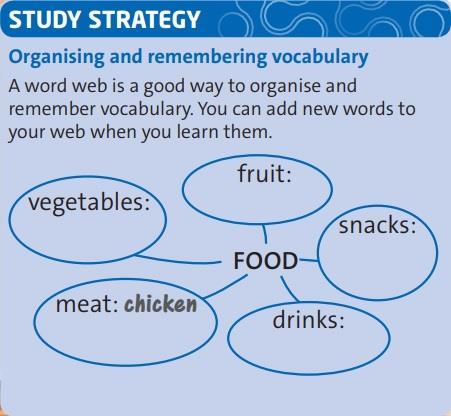
- Teacher asks some pairs to report back to the class.
ACTIVITY 3: PRACTICE
❖ Aims: Students can apply the knowledge which they have learnt to do the tasks given.
❖ Contents:
- Students complete the word web with words in exercise 1
- Students practice to pronounce short and long vowels /ɪ/ and /iː/
- Students watch/listen to the tap, then answer the question and complete the key phrase.
❖ Products: Students’ answers
❖ Organization Exercise 2:
- Teacher reads the study strategy with the classthen put students into pairs to copy and complete the word web. Draw the word web
13. egg 14. salad 15. bread
16. pasta 17. chicken 18. water
19. soup
New words
- sandwich (n) (pic.)
- juice (n) (pic.)
- meat (n) (pic.)
- rice (n) (pic.)
- chips (n) (pic.)
- beans (n) (pic.)
- vegetables (n) (pic.)
- sweets (n) (pic.)
- nuts (n) (pic.)
- fizzy drinks (n) (pic.)
- salad (n) (pic.)
- bread (n) (pic.)
- pasta (n) (pic.)
- chicken (n) (pic.)
- water (n) (pic.)
- soup (n) (pic.)
- nice (a) (expl.)
- horrible (a) (expl.)
- disgusting (a) (expl.)
2. Read the Study Strategy. Then copy and complete the word web with words in exercise
1. Think of more words to add to the web.
Suggested answers:
vegetables: chips, salad, beans
fruit: apple
DẠYKÈMQUYNHƠNOFFICIAL
on the board and bring students’ ideas together on the board. Elicit more words to add. Encourage students to add more words to their own word web as they continue working through this unit.
snacks: nuts, crisps, sweets drinks: water, fizzy drinks, juice meat: chicken
- Students do the task in pairs.
Exercise 3:
- Teacher plays the audio of the first four words for students to listen, then play it again, pausing aftereach word forstudentsto repeat.
- Students listen and repeat the words.
- Teacher plays the next six words for students to listen and add them to the table.
- Students complete the table.
- Teacher check answers then play the audio again, pausing after each word for students to repeat.
Exercise 4:
- Teacher plays the video or audio for students to watch or listen and note down each student’s favourite food.
- Students do the task in pairs.
- Teacher plays the video or audio again, if necessary, for students to check and complete their answers. Check answers with the class.Ask students which of the speakers they agree with.
Exercise 5:
- Teacher allows students time to read through the gapped key phrases. Play the video or audio again for students to watch or listen and complete the key phrases with examples that the students talk about.
- Students watch/listen to the tap again then complete the Key phrase individually.
- Teacher check answers and check that students understand all the key phrases. (With strongerclasses,use the video oraudio to teach delicious, and encourage students to use this word and otheradjectivesto describe food when they talk about food in the next exercise.)
ACTIVITY 4. PRODUCTION
❖ Aims: Students can talk about the food they like and dislike.
3. Listen and repeat the words. Then listen to six more words and complete the table.
Pronunciation
Short and long vowels /ɪ/ and /iː/
Suggested answers
/
ɪ/ fish, fizzy, chicken, drink, chips
/iː/ beans, meat, cheese, eat, meal
4. Watch or listen. What food do the students like?
Suggested answers
The students like chicken salad, fish and chips, burgers (with cheese) and vegetable soup.
5. Watch or listen again and complete the Key Phrases with examples that the students talk about.

Suggested answers
1. fish and chips
2. chicken salad
3. pasta
4. many school meals
5. chicken
DẠYKÈMQUYNHƠNOFFICIAL
❖ Contents: Studentswork in groups to ask and answer questions using the Key phrases
❖ Products: Student’s talking.
6. USE IT! Work in groups. Ask and answer questions using the Key Phrases and the words in the box.
❖ Organization: Exercise 6:
- Teacherasks a confidentstudentone or two questionslike the example,using the foodsin the box. Elicit a range of answers. Use the Jigsaw technique,put students into groups to ask and answer questions.
- Students do the task following the Jigsaw technique.
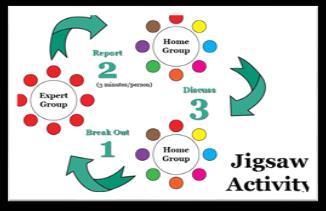
* Finished?
- Teacher refers fast finishers to the Finished? activity.
- Students can write their ideas individually and compare with another fast finisher.
- Alternatively, teacher asks them to tell the class. Ask other students if they agree with the ideas for a perfect and horrible school lunch.
ACTIVITY 5. HOMEWORK
- Learn by heart all the new words.
- Do exercises (in workbook p.36).
- Prepare new lesson
Week :
Period:
(Students’ own answers)
Finished? Invent a perfect school lunch and a horrible school lunch.
(Students’ own answers)
Date of preparing:
Date of teaching:
UNIT 5: FOOD AND HEALTH
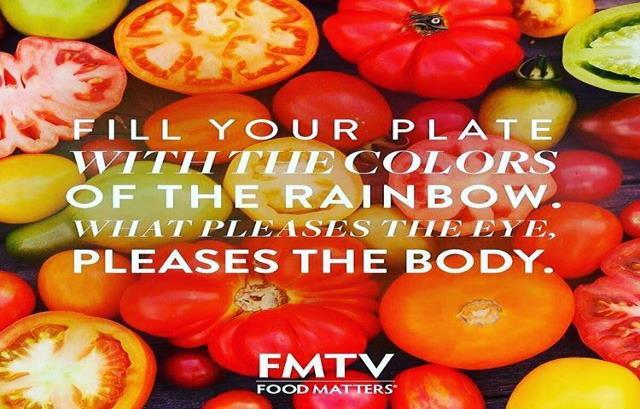
Lesson 2: Reading
Sumo wrestlers
I./. OBJECTIVES
1. Knowledge: By the end of the lesson, students will be able to:
DẠYKÈMQUYNHƠNOFFICIAL
- summarise a text
- develop students’ reading skill.
2. Skills: Speaking, listening, reading, writing.
3. Attitude: Students know how to learn English in right way.
4. Competence: Communication, self-learning capability, creative capacity, ability to use of language……
II./. PREPARATION
1. Teacher: book, planning, TV
2. Students: books, notebooks
III./. TEACHING METHODS
Communicative approach,group Ss and T’s activities,play asa character,teachingmethodswith game, teaching methods by visual, teaching methods by practicing, discussion group, technical present….
IV./.PROCEDURE
1. Check – up : during the lesson
2. New lesson:
Teacher’s and Students’ activities
ACTIVITY 1: WARM-UP
❖ Aims: Studentscan predict the content of a text
❖ Contents: Students work individually
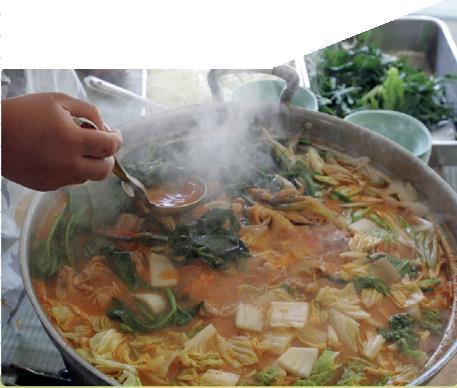
❖ Products: Students’ answers
❖ Organization:
- Teacher reads the question with the class and brainstorm what students know about sumo wrestlers. Refer them to the photo to help them.
- Studentsanswer the question,then share the answer with their partner.
- Teacher checks the answer with class. Then, give them more information about Sumo wrestling
* Back ground
Sumo wrestling originated in Japan. Wrestlers win a fight by forcing their opponent to step outside the ring, or forcing them to touch the ground with any part of their body apart from their bottom or feet.

ACTIVITY 2 : KNOWLEDGE FORMATION
❖ Aims: Teacher presents new words related to family
❖ Contents: Students listen and repeat new words individual/pairs/groups.
Contents
DẠYKÈMQUYNHƠNOFFICIAL
THINK! Look at the photo. What do you know about sumo wrestlers?
( Students’ own answers )
❖ Products: Students can remember, understand and use the new words.
❖ Organization:
Pre-reading
-Teacher introduces some new words
“Before reading, there are some new words in the text.”
- Teacher uses some techniques of teaching vocabulary to teach them, then asks students to listen and repeat.
- Students listen to the teacher and repeat the words.
- Students copy down these words into their notebooks.
Exercise 1:
- Teacher explains that the text is an interviewaboutsumo wrestling. Point outthe questions already in the text and the gaps for further questions. Allow students time to read through questions a–d. Check they understand the new words
- Students read and complete the interview with the questions. They can compare their answers in pairs.
- Teacher checks answers with the class.
- Teacher has students open their books to page 64
- Teacher asks students to read the Skills strategy before doing exercise. Point out that a summary focuses on the general idea of a text, not the details.

ACTIVITY 3: PRACTICE
❖ Aims: Students can apply the knowledge which they have learnt to do the tasks given as well as develop reading skill
❖ Contents: Students work individual/ pairs/ groups.
❖ Products: Students’ answers
❖ Organization
While-reading
Exercise 2:
- Students read and listen to the text and complete the summary with the correct words. They can compare their answers in pairs.
- Teacher checks answers with the class.
New words
- typical (a) (expl.)
- healthy (a) (expl.)

1. Read the text. Complete the interview with questions a–d.
2. Read the Skills Strategy. Then listen to the text again and complete the summary with five of the words in the box.
DẠYKÈMQUYNHƠNOFFICIAL
answers 1 c 2 a 3 d 4 b Skill strategy
Suggested
Suggested answers 1 isn’t 2 healthy 3 eat 4 afternoons 5 after
Optional activity
- Teacher writes these sentences on the board:
Optional activity.
Suggested answers
1. Most sumo wrestlers weigh 190 kilos.
2. Sumo wrestlers start training early in the morning.

3. They have a big breakfast.
4. There’s a lot of fat in chankonabe.
5. They sometimes eat sweet foods.
- Students work in pairs to decide if the sentences are true or false, and correct the false sentences.
- Teacher checks answers with the class.
Exercise 3:
- Teacher has students use a dictionary to check the meanings of the words in blue in the text. Discuss the meanings with the class. Teacher could ask students to translate the words into their own language to check understanding.
- Students do as directed.
Optional activity
- Teacher write the following gapped sentences on the board:
1. are good for you.
2. Sports people usually every day.
3. Spaghetti bolognese is a popular in Italy.
4. You have at the end of a meal.
5. You put rice or soup in a
- Students complete the sentences with the correct blue words from the text.
- Teacher checks answers with the class.
ACTIVITY 4. PRODUCTION
❖ Aims: Teacherhelpsstudentsconsolidate the lesson
❖ Contents: Students work in groups.
❖ Products: Students’ comprehension
❖ Organization:
Post-reading
Exercise 4:
- Teacher allows students time to prepare their answers to the questions individually. They then discuss the questions in pairs.
- Students do the task.
1 False (Only the heaviest sumo wrestlers weigh 190 kilos.)
2 True
3 False (They don’t have breakfast.)
4 False (There isn’t much fat in chankonabe.)
5 True
3. Use a dictionary to check the meanings of the words in blue in the text.
Vocabulary plus
- train (v) huấn luyện
- dish (n) món ăn
- vitamins (n) vitamin
- enormous (a) khổng lồ
- bowls (n) tô
- desserts (n) món tráng miệng
Optional activity
Suggested answers
1 Vitamins
2 train
3 dish
4 desserts
5 bowl
4. USE IT! Work in pairs. Do you think a sumo wrestler’s life is interesting? Why / Why not? What is your favourite dish?
( Students’ own answers )

DẠYKÈMQUYNHƠNOFFICIAL
- Teacher asks some students to report back to the class. Discuss as a class what students’ favourite dishes are. Ask more questions to extend the discussion, (e.g. What’s your favourite meat / fish dish? What’s your favourite dessert? How do you make it?) See which dishes are the most popular with the class.
ACTIVITY 5. HOMEWORK
- Learn by heart all the new words.
- Do exercises (in workbook p.40).
- Prepare new lesson
* Feedback:
Week :
Date of preparing:
Period: Date of teaching:
UNIT 5: FOOD AND HEALTH
Lesson 3: Language focus
• Countable and uncountable nouns
• some, any, much, many and a lot of
I./. OBJECTIVES
1. Knowledge: By the end of the lesson, students will be able to talk about food and meals.
2. Skills: Speaking, listening, reading, writing.
3. Attitude: Students know how to learn English in right way.
4. Competence: Communication, self-learning capability, creative capacity, ability to use of language……
II./. PREPARATION
1. Teacher: book, planning, TV
DẠYKÈMQUYNHƠNOFFICIAL
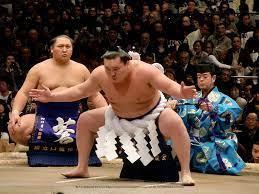
2. Students: books, notebooks
III./. TEACHING METHODS
Communicative approach,group Ss and T’s activities,play asa character,teachingmethodswith game, teaching methods by visual, teaching methods by practicing, discussion group, technical present….
IV./.PROCEDURE
1. Check – up: during the lesson
2. New lesson:
Teacher’s and Students’ activities Contents
ACTIVITY 1: WARM-UP
❖ Aims: Students know some words are countable nouns and some are uncountable.
❖ Contents: Students work in individually.
❖ Products: Countable and uncountable nouns.
❖ Organization:
- Teacher ask students to watch/listen and chant along the video tap about foods.

- Students work in two teams to chant along.
- Teacher ask students what kinds of food they like. Elicit some words from the video tap and write them on the board, (e.g. bread, chips, meat, vegetables)
- Students answer.
- Teacher points out that some words are in the singular and some are plural. Elicit or explain that some are countable nouns and some are uncountable.
ACTIVITY 2 : KNOWLEDGE FORMATION
❖ Aims: Help students distinguish between the countable nouns and uncountable nouns
❖ Contents: Students work individually.
❖ Products: Language point about countable and uncountable nouns
❖ Organization:
- Teacher explains the countable and uncountable nouns. Show students how to distinguish between them.
- Students listen carefully and copy down into their notebooks.
ACTIVITY 3: PRACTICE
Chant: What do you like?
https://www.youtube.com/watch?v=NefcvGMqcyU
T: What kinds of food do you like?
Sts: - bread
- chips
- meat
- vegetables
-
Language point
COUNTABLE AND UNCOUNTABLE NOUNS Nouns can be countable or uncountable.
- Countable nouns can be counted.
Example: an apple, two apples, three apples, etc.
- Uncountable nouns cannot be counted.
Example: air, rice, water, etc.
1. Find examples of the words below in the texts on pages 62 and 63. Which are countable
DẠYKÈMQUYNHƠNOFFICIAL
❖ Aims: Help students apply the knowledge they have learnt to do the tasks given.
(c) and which are uncountable (u)? Add the words to Rules 1–2.
Suggested answers
❖ Contents:
- Students find the Rules 1 – 2.
- Students look at the pictures and complete the sentences.
- Students choose the correct words in Rules
1 – 3.
- Students complete questions 1–5 with much and many. Then choose the correct words in the answers.
❖ Products: Students’ answers
❖ Organization
Exercise 1:
- Students find the words in the texts and decide which are countable and which are uncountable.Students could work in pairs to do this.

- Teacher check answers with the class, then read through the rules with the class and ask students to complete the rules with the correct words.
- Students complete the rules individually.
- Teacher checks answers with the class.
Exercise 2:
- Students look at the pictures and complete the sentences with the words in the box. (With weaker classes,studentscould work in pairs for this activity.)
- Teacher checks answers with the class.
apple (c), juice (u), egg (c), bread (u), pasta (u), sweet (c), water (u), snack (c)
Exercise 3:
- Teacher has students choose the correct words to complete the rules.
- Students work in pairs to do the task.
- Teacher check answers with the class. Play the grammar animation.
- Students watch the animation.
Rules:
1. an egg / eggs, a sweet / sweets, a snack / snacks.
2. bread, pasta, water.
Language note
- We can count countable nouns, but we cannot count uncountable nouns: one apple, two apples (NOT one bread, two breads).
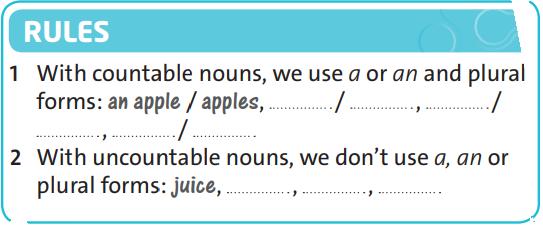
- If we want to countuncountable nouns,we have to use another word that we can count: two slices of bread, two glasses of water.
2. Look at the pictures and complete the sentences.
Suggested answers
1. rice
2. cheese
3. meat
4. vegetables
5. pears
6. crisps
3. Look at the sentences in exercise 2 and choose the correct words in Rules 1–3.
Suggested answers
1. much
2. many
3. negative
DẠYKÈMQUYNHƠNOFFICIAL
- Teachershow how to use quantifiersbefore nouns.
- Students listen carefully and then copy down into their notebooks.
Language note
- We use some in affirmative sentences and any in negative sentences and questions:
Example:
We’ve got some cheese.
We haven’t got any cheese. Have we got any cheese?
(NOT Have we got some cheese?)
- We use much with uncountable nounsand many with countable nouns:
Example:
How many eggs? How much bread? (NOT How much eggs?)
Exercise 4:
- Students complete the questions with the correct words.
- Teacherchecks answers with the class then ask students to choose the correct answers.
- Students could work in pairs for this, or they could work individually and then compare their answers in pairs.
ACTIVITY 4. PRODUCTION
❖ Aims: Help students consolidate the language point
❖ Contents: Students work in individual/pairs
❖ Products: Students’ sentences.
❖ Organization: Exercise 5:
- Teacher reads out some of the sentence beginningsand elicit some possible answers.
- Students complete the sentences with their own ideas.
- Teacher asks two students to read out the example dialogue. Point out the question What about you? to ask for information about someone else.
- Students work in pairs to discuss their answers. They then swap and work with a new partner to compare again.
4. Complete questions 1–5 with much and many. Then choose the correct words in the answers.
Suggested answers
1. much, any
2. many, many
3. much, a lot of
4. much, much
5. many, some
5. USE IT! What do you usually eat and drink every week? Complete the sentences. Then compare with other people in the class. Are they the same or different?
1. I eat some .
2 I never eat any .........................
3 I don’t eat many / much .........................
4 I drink a lot of .........................
5 I don’t drink much .........................
6 I never drink any ........................
(Students’ own answers)
DẠYKÈMQUYNHƠNOFFICIAL
- Teacher asks students to note down whose sentences are the same as theirs.
* Finished
- Teacher refers fast finishers to the Finished? activity.
Finished? You invite three friends for a celebration at your house. Write a shopping list for the food and drink you want to buy.
- Students can write their shopping lists individually and compare with another fast finisher.
- Alternatively, teacher asks students to read their shopping lists to the class. Write items on the board and brainstorm more ideas to add with the whole class.
ACTIVITY 5. HOMEWORK
- Learn by heart all the new words.
- Do exercises (in workbook p.37).
- Prepare new lesson
* Feedback:
Week :
Period:
(Students’ own answers)
Game: Food https://www.gamestolearnenglish.com/food/
Date of preparing:
Date of teaching:
UNIT 5. FOOD AND HEALTH
Lesson 4: Vocabulary and Listening
• Adjectives: Health
I./. OBJECTIVES
1. Knowledge: By the end of the lesson, students will be able to:
- understand specific information in interviews about health.
- develop students’ listening skill.
2. Skills: Speaking, listening, reading, writing.
3. Attitude: Students know how to learn English in right way.
4. Competence: Communication, self-learning capability, creative capacity, ability to use of language……
II./. PREPARATION
1. Teacher: book, planning, TV
2. Students: books, notebooks
III./. TEACHING METHODS
Communicative approach,group Ss and T’s activities,play asa character,teachingmethodswith game, teaching methods by visual, teaching methods by practicing, discussion group, technical present….
IV./.PROCEDURE
DẠYKÈMQUYNHƠNOFFICIAL
1. Check – up: during the lesson
2. New lesson:
Teacher’s and Students’ activities Contents
ACTIVITY 1: WARM-UP
❖ Aims: Introduce to students about some activities to be healthy or not.
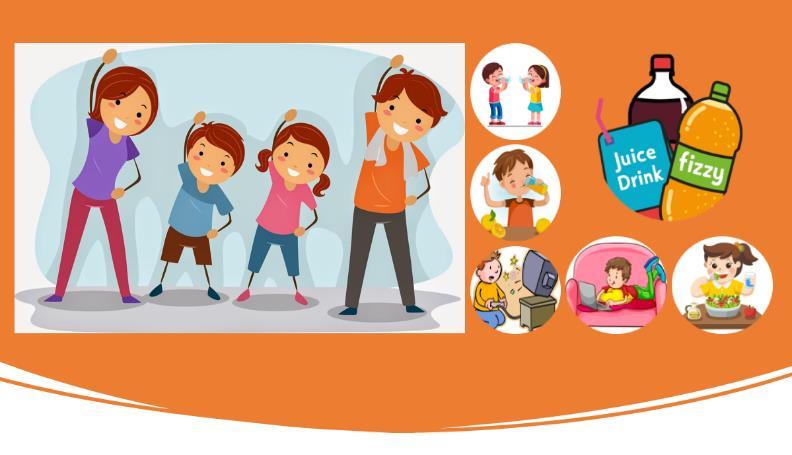
❖ Contents: Students think – pair – share their ideas
❖ Products: The list of some activities to be healthy
❖ Organization:
- Teacher divides class into 4 groups. Ask students to look at a picture about the activities in 30 seconds. Then, write down these activitiesasfastas possible in the small board and stick it on the board.
- Students work in groups to do the task.
- Teacher checks and declares the winner who wrote the most correct activities. Then, read out the question with the class. Ask students work in pairs to answer the question using the ideas in the game and their own ideas.
- Teacher discusses as a class the best things to do in order to be healthy.
ACTIVITY 2 : KNOWLEDGE FORMATION
❖ Aims: Teacher presents some adjectives related to health.
❖ Contents: Students listen and repeat new words individual/pairs/groups then do the task to practice.
❖ Products: Students can understand, remember and use the new words.
❖ Organization:
Pre-listening
Exercise 1:
- Teacher shows new words and uses some techniques of teaching vocabulary to teach them, then asks students to listen and repeat.
- Studentslisten to the teacher and repeat the words.
- Students copy down these words into their notebooks. Then use their dictionaries to check the meanings of the words and
Game: Memory
THINK! What can you do if you want to be healthy?
(Students’ own answer)
1. Check the meanings of the words in the box. Then complete the definitions with five of the words.
New words
- active (a)
- unhealthy (a)
- unfit (a)
- well (a)
- hungry (a)
- fit (a)
- full (a)
- tired (a)
- lazy (a)
- healthy (a)
- ill (a)
Suggested answers
1 active
2 hungry
DẠYKÈMQUYNHƠNOFFICIAL
complete the definitions. (With weaker classes, students could work in pairs).
3 healthy
4 fit
- Teacher checks answers with the class and check that students understand the words in the sentences.
Exercise 2:
- Teacher reads out the example sentence from exercise 1 and point out the opposite adjective well.
- Studentswork in pairsto find the remaining opposites in the box in exercise 1.
- Teacher plays the audio for students to check their answers. Check that students understand all the adjectives.
ACTIVITY 3: PRACTICE
❖ Aims: Help students improve their listening skill and apply the knowledge they have learnt to do the tasks given.
❖ Contents: Students work in pairs/groups
❖ Products: Students’ answers
❖ Organization
While-listening
Exercise 3:
- Students work in pairs to read the Health quiz and choose the best answers.
- Teacher checks answers with the class and see who got the most correct answers
Exercise 4:
- Teacher allows students time to read the questions and prepare their answers individually. Do not check answers at this stage
- Students do as directed.
Exercise 5:
- Teacher reads out the questions then play the audio.
- Students listen and note down which questions each person answers.
- Teacher checks answers with the class.
Exercise 6:
- Teacher allows students time to read the questions. Point out that in this exercise students must listen carefully for specific information. Play the audio again.
- Students listen and answer the questions.
5 tired
2. What are the opposites of the adjectives in sentences 1–4 in exercise 1? Use the words in the box. Listen and check.
Suggested answers
1 lazy
2 full
3 unhealthy
4 unfit
3. Work in pairs. Look at the Health quiz and choose the best answer a, b or c.
Suggested answers
4. Read the Health check questionnaire and answer the questions.
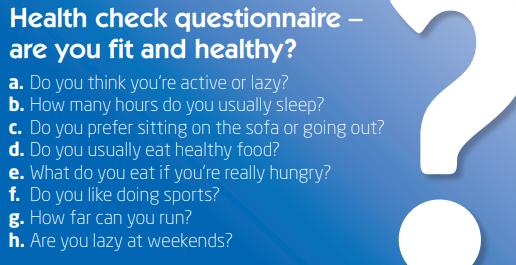
5. Listen to three interviews. Which questions a–h in exercise 4 does each person answer?
Suggested answers
1 Charlie: a, b, h, c
2 Conor: b
3 Fran: f, g, d
6. Listen again and answer the questions.
Suggested answers
1 Eight or nine hours
DẠYKÈMQUYNHƠNOFFICIAL
1 b 2 a 3 c 4 c 5 a 6 b
- Teacher checks answers with the class.
2 No, he isn’t. He likes going out and doing sport.
Optional activity
- Teacher writes these questions on the board.
Who
1 can run 41 kilometres?
2 isn’t very fit at the moment?
3 doesn’t like staying in bed?
4 sleeps for 6 or 7 hours?
- Students work in pairs and discuss the answers to the questions from memory.
- Teacher plays the audio again for them to check their answers.
ACTIVITY
4. PRODUCTION
❖ Aims: Help students consolidate the lesson
❖ Contents: Students work in pairs.
❖ Products: Students’ talking.
❖ Organization: Post-listening
Exercise 7:
- Students work in pairs to ask and answer the questions.
- Teacherdiscusseswhatstudentscould do to become fitter and healthier.
ACTIVITY
5. HOMEWORK
- Learn by heart all the new words.
- Do exercises (in workbook p.38).
- Prepare new lesson
3 He’s studying for exams.
4 She runs and swims.
5 Healthy foods: pasta, chicken; Unhealthy foods: desserts and chocolate
Optional activity
Suggested answers
1 Fran
2 Conor
3 Charlie
4 Conor
7. USE IT! Work in pairs. Ask and answer the questions in the Health check questionnaire. Who is fitter and healthier?
(Students’ own answer )
Eating healthy nutritious food is the simple and right solution to get rid of excess body weight effortlessly and become slim and healthy forever.
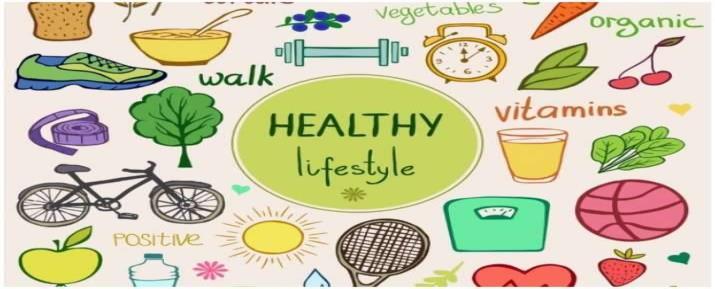 – Subodh Gupta –
– Subodh Gupta –
* Feedback:
DẠYKÈMQUYNHƠNOFFICIAL
Week :
Period:
Date of preparing:
Date of teaching:
UNIT 5. FOOD AND HEALTH
Lesson 5: Language focus
• Verb + -ing
• Imperatives
• should / shouldn't
I./. OBJECTIVES
1. Knowledge: By the end of the lesson, students will be able to talk about likes and dislikes and give advice/instructions.
2. Skills: Speaking, listening, reading, writing.

3. Attitude: Students know how to learn English in right way.
4. Competence: Communication, self-learning capability, creative capacity, ability to use of language……
II./. PREPARATION
1.Teacher: book, planning, TV
2.Students: books, notebooks
III./. TEACHING METHODS
Communicative approach,group Ss and T’s activities,play asa character,teachingmethodswith game, teaching methods by visual, teaching methods by practicing, discussion group, technical present….
IV./.PROCEDURE
1.Check – up: during the lesson
2.New lesson:
Teacher’s and Students’ activities
ACTIVITY 1: WARM-UP
Game: Pelmanism
Contents
DẠYKÈMQUYNHƠNOFFICIAL
❖ Aims: Get students into the right mood for learning the new lesson.
❖ Contents: Students play game
“Pelmanism”
❖ Products: V-ing form.
❖ Organization:
-Teachershowsstudentshowto play the game.
- A student lays cards face down in a grid and take turns flipping over two cards at a time looking for a match. If he/she find a match, he/shego again.If the cardsare nota match,the player turns them back over and the next student goes.
- Teacher declares the winner who finds the mostmatches.Then,teacherunderlinesthe -ing forms from the game, and explain that in English some verbs are often followed by aning form.
ACTIVITY 2 : KNOWLEDGE FORMATION
❖ Aims: Help students understand how to use the verbs of liking.
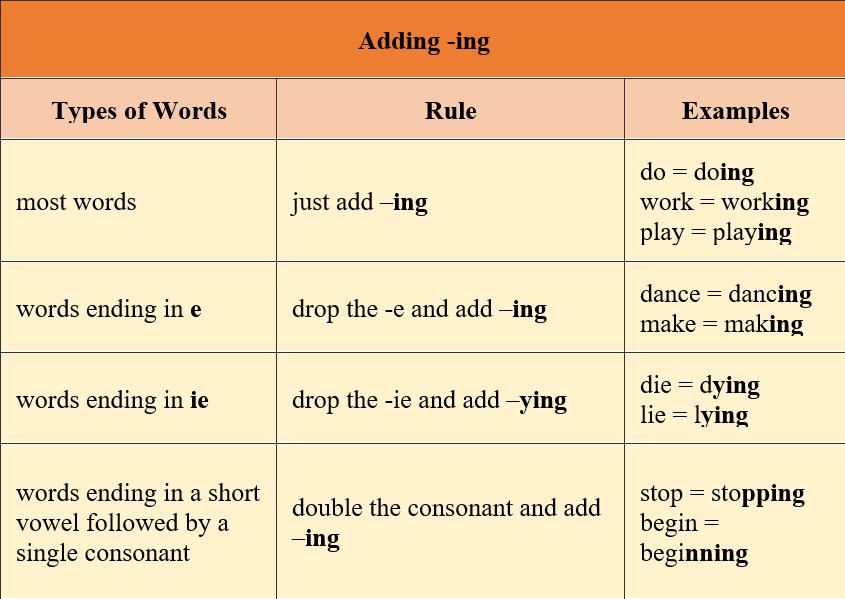
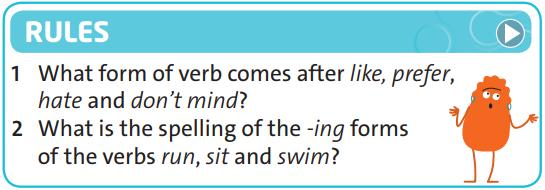
❖ Contents: Students pay attention to the examples then answer the questions.
❖ Products: Students’ understanding.
❖ Organization: Exercise 1:
- Teacher reads out the examples, then read through the rules with the class and elicit the answers.
- Students do the task in pairs.
- Teacher checks answers with the class. Play the grammar animation.
https://matchthememory.com/presentprogressive2
1. Look at the examples. Then answer the questions in Rules 1–2. Suggested answers
1 the -ing form
2 running, sitting, swimming
- Teacher explains the grammar to students.
- Students copy down to their notebooks.
Language
point VERBS OF LIKING
like/prefer/dislike/ hate/ don’t mind + V-ing
DẠYKÈMQUYNHƠNOFFICIAL
ACTIVITY
3: PRACTICE
❖ Aims: Help students apply the knowledge they have learnt to do the tasks given.
❖ Contents: Students work in individual/pairs/groups
2. Think of two things that you love doing, two things that you don’t mind doing and three things that you hate doing. Write sentences and then compare in a group to find out about your friends’ likes and dislikes.
❖ Products: Students’ answers
❖ Organization:
Exercise 2:
- Teacherasksstudents to write their sentences individually.
- Students write.
- Teacher put students into small groups to compare their sentences.
Exercise 3:
- Teacher reads out the examples of imperatives and ask students how to make them negative.
- Students answer.
- Teacher elicit a few answers, then ask students to check in the quiz in exercise 3 on page 66.
Exercise 4:
- Students use imperatives to write about the classroom rules (Dos and Don’ts).
- Teacher checks the answers with the whole class and see who got the most correct answers.
Suggested answers (Students’ own answer)
3. Look at the examples of imperatives. How do we make the negative form? Find examples in the Health quiz on page 66.
Do not/ Don’t + V_bare + ......
Suggested answers
- Don’t eat.
- Don’t go to bed late.
- Don’t go to school.
4. Add more classroom rules with DOs and DON’Ts using imperatives.

Exercise 5:
- Teacherfocuseson the first picture and elicit the answer.
- Students complete the sentences with the correct imperative forms. (With weaker classes, students could work in pairs)

(Students’ own answer)
5. Complete the sentences with the affirmative and negative imperative forms of the verbs in the box.
Suggested answers
1 Eat
2 Visit
3 Don’t drink
4 Go
DẠYKÈMQUYNHƠNOFFICIAL
Language point THE NEGATIVE FORM OF IMPERATIVES
- Teacherchecks answers with the class. (With stronger classes, ask students to write alternative sentences for some of the pictures)
6. Look at the examples. Then choose the correct answers to complete the Rules.
Exercise 6:
- Teacher read the example sentences to the class, or ask for a confident volunteer. Ask students to read the rules and choose the correct options.
- Students answer.
Exercise 7:
- Teacher go through the example with the class and show how the prompts are expanded to make full sentences. Remind them to consider whether the prompt gives good or bad advice.

- Students can work in pairs to complete the rest of the sentences.
ACTIVITY 4. PRODUCTION
❖ Aims: Help students consolidate the way the use comparative adjectives to compare things.
❖ Contents: Students work individual/pairs
❖ Products: Students’ comparison
❖ Organization: Exercise 8:
Put studentsinto small groupsto compare their answers and decide which advice is best. Ask them to choose the two best pieces of advice for each situation. Ask groups in turn to report back and discuss as a class which is the best advice.
- Teacher refer fast finishers to the Finished? activity.
Studentscan write their rulesindividually then compare with another fast finisher. Alternatively, ask fast finishers to read their rules to the class. Write the rules on the board and elicit more from other students.
ACTIVITY 5. HOMEWORK
- Learn by heart all the new words.
Suggested answers give advice, the same
7. Your friend wants to be healthy. Complete the advice using should / shouldn’t.

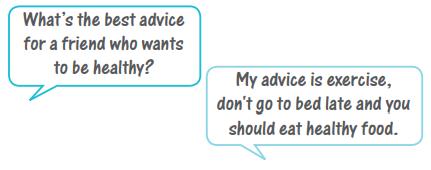
Suggested answers
1 You shouldn’t stay up late.
2 You should eat fruit and vegetables.
3 You should do exercise.
4 You shouldn’t drink fizzy drinks.
5 You shouldn’t sit on the sofa all day.
8. USE IT! Work in groups. Compare your advice in exercise 7. Who has got the best advice?
(Students’ own answer)
Finish? Write five important rules for your class. Use imperative forms.
(Students’ own answer)
DẠYKÈMQUYNHƠNOFFICIAL
- Do exercises (in workbook p.39).
- Prepare new lesson
Week :
Period:
Date of preparing:
Date of teaching:
UNIT 5. FOOD AND HEALTH
Lesson 6: Speaking
• In a café
I./. OBJECTIVES
1. Knowledge: By the end of the lesson, students will be able to:
- order food and drink in a café.
- develop students’ speaking skill.
2. Skills: Speaking, listening, reading, writing.
3. Attitude: Students know how to learn English in right way.
4. Competence: Communication, self-learning capability, creative capacity, ability to use of language……
II./. PREPARATION
1.Teacher: book, planning, TV
2.Students: books, notebooks
III./. TEACHING METHODS
Communicative approach,group Ss and T’s activities,play asa character,teachingmethodswith game, teaching methods by visual, teaching methods by practicing, discussion group, technical present….
IV./.PROCEDURE
1.Check – up: during the lesson
2.New lesson:
Teacher’s and Students’ activities
Contents ACTIVITY 1: WARM-UP
❖ Aims: Help students get comfortable with classmates and focus their brains on content of the new lesson.
❖ Contents: Students watch a video clip about the conversations between a waitress and some customers. And then answer the questions.

❖ Products: Students’ answers.
❖ Organization:
DẠYKÈMQUYNHƠNOFFICIAL
- Teacher aske students to watch a video clip and then reads the questions with the class and elicit answers from individual students. Ask more questions to encourage students to say more, (e.g. Is the food nice? How much do you usually pay?)
(https://www.youtube.com/watch?v=49QFHWIky-k)
THINK! What is your favourite restaurant or café? What kind of food and drink do you usually eat there?
(Students’ own answers)
- Students do as directed.
ACTIVITY 2 : KNOWLEDGE FORMATION
❖ Aims: Help students pay attention to the content of the dialogue
❖ Contents: Students work in individual/ pairs.
❖ Products: Students’ understanding.
❖ Organization: Pre-speaking
Exercise 1:
- Teacher presents some new words and check that students understand them.
- Teacher asks students to read the menu and complete it with the words in the box.
- Students work individually to do the task.
- Teacher ask individual students which things they like and dislike on the menu.
Exercise 2:
- Teacherplaysthe audio once forstudentsto listen. Play it again, pausing after each price for students to repeat.
- Students repeat after the audio
- Teacher call outs some students to read out the price.
Exercise 3:
- Teacherreads through the glossary with the class.
- Students work in pairs to read and say the prices.

- Teacher plays the audio.
- Students listen and check their answers.
- Teacher checks answers with the class.
Optional activity:
- For more practice of prices, teacher divides the class into teams and write a selection of prices on the board. Teams take turns choosing a price to say. If they get it right, they get a point and the price is crossed off. If they make a mistake, they lose a point and the price remains on the board. Continue
1. Complete the menu with the words in the box. Which things on the menu do you like or dislike?
New words
- plain (adj) (expl.)
- vegetarian options (n) (expl.)
- mineral water (n) (item.)
Suggested answers
1 cheese
2 chicken
3 chips
4 burger
5 juice
2. Listen and say the prices.
1 £4.50 four pounds fifty
2 £1.00 one pound
3 £1.20 one pound twenty

4 £4.95 four pounds ninety-five
5 £0.80 eighty pence
3. Read and say the prices. Listen and check.
Suggested answers
1 two pounds twenty-five
2 one euro 3 fifty cents
4 three dollars eighty-five
5 seven dollars twenty
6 ninety-nine pence

DẠYKÈMQUYNHƠNOFFICIAL
untilall the priceshave been crossed off. See which team has the most points.
4. Read the dialogue, look at the menu and calculate the total price. Then watch or listen and check. Is Aaron’s meal very healthy?
ACTIVITY 3: PRACTICE
❖ Aims: Help students develop speaking skillin readingthe price and the way to order food and drink in a café.
❖ Contents: Students work in pairs/groups
❖ Products: Students’ performance
❖ Organization
While-speaking Exercise 4:
- Teacher allows students time to read the dialogue, look at the menu and calculate the price. Elicit some possible answers, but do not confirm the answer at this stage.
- Students do as directed.
- Teacher plays the video or audio for students to check. Discuss as a class if Aaron’s meal is healthy or unhealthy.
Exercise 5:
- Students look at the dialogue again and complete the key phrases.
- Teacher check answers, and check that students understand all the key phrases. Put students into pairs to practise the dialogue using different items from the menu in exercise 1.
- Students work in pairs to practise the dialogue.
Optional activity:
- Teacher plays the audio or video again, pausing after each of the key phrases. Get students to repeat the key phrases, and encourage them to copy the intonation on the recording.
- Students do as required.
ACTIVITY 4. PRODUCTION
❖ Aims: Help students consolidate the way to order food and drink in a café
❖ Contents: Students work in pairs
❖ Products: Students’ conversation
❖ Organization:
Post-speaking Exercise 6:
Suggested answers
£2.50 + £1.20 + £1.80 = £5.50 His meal isn’t very healthy.


5. Look at the dialogue and complete these Key Phrases. Then practise the dialogue with a partner. Use different items from the menu in exercise 1.
Suggested answers
1 Can
2 have a cheese sandwich
3 like salad or chips
4 Anything
5 have a cola
6 That’s £5.50
6. USE IT! Work in pairs. Prepare and practise two dialogues using the Key Phrases and the situations below. Use the menu in exercise 1.

DẠYKÈMQUYNHƠNOFFICIAL
- Teacher puts students into pairs and tell them to swap roles after situation A. Allow students time individually to decide what they are going to order.
- Students prepare and practise their dialogues.
- Teacherasks some studentsto perform their dialogues for the class. Optional activity:
- For more speaking practice, get students to work in pairs and prepare their own menu, using different foods from pages 62 and 63. Monitor and help while they are working. Students can swap menus with another pair and practise ordering food again.

ACTIVITY 5. HOMEWORK
- Learn by heart all the structures
- Do exercises (in workbook p.83).
- Prepare new lesson
* Feedback:
DẠYKÈMQUYNHƠNOFFICIAL
(Students’ own answers)
Week : Date of preparing:
Period: Date of teaching:
UNIT 5. FOOD AND HEALTH
Lesson 7: Writing
• A food blog
I./. OBJECTIVES
1. Knowledge: By the end of the lesson, students will be able to: - write a blog about food using sequencing words. - develop students’ writing skill.
2. Skills: Speaking, listening, reading, writing.
3. Attitude: Students know how to learn English in right way.
4. Competence: Communication, self-learning capability, creative capacity, ability to use of language……
II./. PREPARATION
1. Teacher: book, planning, TV
2. Students: books, notebooks
III./. TEACHING METHODS
Communicative approach,group Ss and T’s activities,play asa character,teachingmethodswith game, teaching methods by visual, teaching methods by practicing, discussion group, technical present….
IV./. PROCEDURE
1. Check – up: during the lesson
2. New lesson:
Teacher’s and Students’ activities Contents ACTIVITY 1: WARM-UP
❖ Aims: Help students brainstorm of what they are going to study.
❖ Contents: Students listen to the song “Burger Recipe Song”. Then answer the questions.

❖ Products: Students’ answers
❖ Organization:
- Teacherhas studentswatch and listen to the song. And then, sing along the song.
- Students do as directed.
- Teacher asks the questions to the class and elicit answers from individual students. Encourage studentsto share their experiences with the class and ask more questions to encourage them to speak more, (e.g. What things can you cook? What would you like to
(https://youtu.be/zHzsY5c9fCk)
THINK! Who cooks in your family? What do they usually cook? Do you like cooking?
(Students’ own answers)
DẠYKÈMQUYNHƠNOFFICIAL
cook? Do you think it’s important to learn how to cook?)
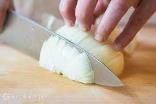
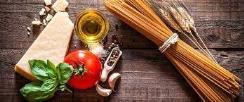
ACTIVITY 2 : KNOWLEDGE FORMATION
1. Check the meanings of the words in the glossary. Then read Sally’s blog. What does she have for the starter? What is her favourite part of the meal?
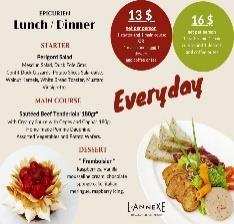
❖ Aims: Help students have an idea of writing a blog about food using sequencing words

❖ Contents: Students work individual to check the meaning of given words
❖ Products: Students can remember, understand, and use the given words
❖ Organization:
Pre-writing
Exercise 1:
- Students check the meanings of the words in their dictionaries.
- Teachermodels pronunciation ofthe words, if necessary.
- Students work in pairs to read the blog and answer the questions, then compare their answers in pairs.
- Teacher checks answers with the class
New words
- tuna (n) (pic.)
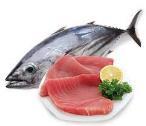
- red pepper (n) (pic.)
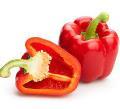
- olives (n) (pic.)
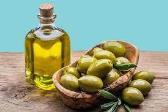
- ingredients (n) (pic.)
- chop (v) (pic.)
- starter (n) (expl.)
- main course (n) (expl.)
- dessert (n) (expl.)
Suggested answers
She has egg salads.Her favourite partofthe meal is the dessert.
ACTIVITY 3: PRACTICE
❖ Aims: Help student how to write a blog about food using sequencing words as well as develop their writing skill
❖ Contents: Students complete the Key Phrases, order pictures and complete the sentences.
❖ Products: Students’ answers
❖ Organization
While-writing
Exercise 2:
- Studentsread the key phrases and complete them using words from Sally’s blog.
- Teacher checks answers with the class and check that students understand all the key phrases
Exercise 3:
- Teacher focuses attention on the words in blue in the blog. Discuss with the class what the words and phrases mean, and which two have the same meaning. Ask students to translate the words and phrases into their
2. Complete the Key Phrases with words from Sally's blog.
Suggested answers
1 Simple, great
2 yummy
3 meal
4 tomorrow
3. Look at the words and phrases in blue in the blog. Which two have the same meaning?
Suggested answers
Next and Then
DẠYKÈMQUYNHƠNOFFICIAL
own language. Point out the commas after First, After that and Finally
4. Order pictures and sentences a-d. Then complete the sentences with the words in exercise 3.
Exercise 4:
- Teacher focuses on the pictures and ask: What’s Sally making? (Vietnamese Spring Rolls).

- Students answer the questions.
- Teacher asks students to order the pictures and the sentences. Check the answers then ask students to complete the sentences with the correct ordering words.
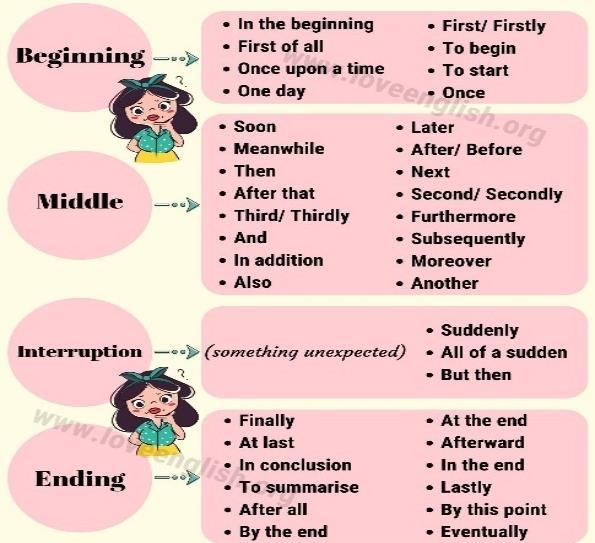
- Students do the task in pairs, then compare the answers with their partner.
- Teacher checks the answers by asking students to read out the completed recipe in the correct order
Optional activity
- Teacher asks students to close their books. Write the following gapped sentences on the board:
1 some fruit.
2 it with sugar.
3 with ice cream.
- Teacherputs studentsinto pairsto complete the sentences from memory. They can then check their answers in the blog. Elicit that the verbs are all imperatives, and point out that we use imperatives to give instructions about cooking food. Elicit some other possible imperativesforcookinginstructions, (e.g. Add some sugar / salt, Stir for five minutes, Don’t cook for too long)
-Teacher writes these on the board to help students when they write their blogs.
ACTIVITY 4. PRODUCTION
❖ Aims: Help students consolidate how to write a blog about food using sequencing words
❖ Contents: Students write a food blog.
❖ Products: Students’ blogs.
❖ Organization:
Exercise 5:
- Teacher reads the task with the class.
- Students answer the questions and plan their blog.
Language point
SEQUENCING
* Usage: Sequencers are used to:
- Tell stories.
- Give instructions
- How to do something.
Suggested answers
a Then/ Next 2
b. First 1
c. Finally 4
d. Next/ Then 3
Optional activity
1 Chop
2 Cook
3 Serve
5. USE IT! Follow the steps in the writing guide.
(Students’ own answers)
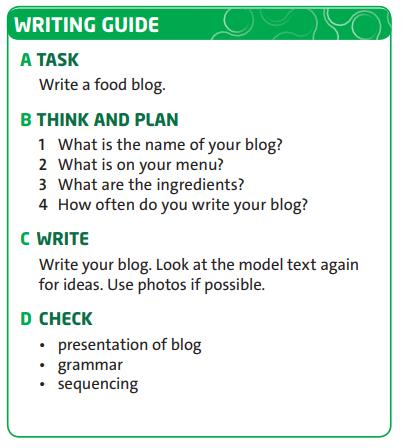
DẠYKÈMQUYNHƠNOFFICIAL
- Teacher reviews Sally’s blog again with the classand pointout thatthe sequencing words are used at the beginning of each paragraph.
- Students write their blog. (This can be set for homework). Remind students to check their grammar and spelling carefully.
ACTIVITY 5. HOMEWORK
- Do exercises (in workbook p.41).
- Prepare new lesson
* Feedback:
Week :
Period:
Date of preparing:
Date of teaching:
UNIT 5. FOOD AND HEALTH
Lesson 8: CLIL
• Science: Food and nutrients
I./. OBJECTIVES
DẠYKÈMQUYNHƠNOFFICIAL
1. Knowledge: By the end of the lesson, students will be able to:
- understand a text and talk about nutrients
- develop students’ knowledge about science and their skills.

2. Skills: Speaking, listening, reading, writing.
3. Attitude: Students know how to learn English in right way.
4. Competence: Communication, self-learning capability, creative capacity, ability to use of language……
II./. PREPARATION
1. Teacher: book, planning, TV
2. Students: books, notebooks
III./. TEACHING METHODS
Communicative approach,group Ss and T’s activities,play asa character,teachingmethodswith game, teaching methods by visual, teaching methods by practicing, discussion group, technical present….
IV./. PROCEDURE
1.Check – up: during the lesson
2.New lesson:
Teacher’s and Students’ activities
ACTIVITY 1: WARM-UP
❖ Aims: Help students brainstorm of what they are going to study
❖ Contents: Students work individual
❖ Products: Students’ answers.
❖ Organization:
- Teacher hands out one Bingo card to each student. Each Bingo card have six words about food. Each Bingo card will be different. Explain to the class that teacher’ll be calling out words from teacher’s list and that the students need to listen carefully. If they have a word on their Bingo card which teacher calls out, then they need to cross out the word. The winner is the one who first crossed outall ofwords in his/herBingo card and should shout out ‘Bingo!’

- Students play the game.
- Teacher elicits a few words in Bingo cards
Explain that food has nutrients in it, which help keep us healthy. Tell students they are going to learn about the nutrients in food.

ACTIVITY 2 : KNOWLEDGE FORMATION
❖ Aims: Help students can understand, remember and use the new words about nutrients
Contents
1. Check the meanings of the words in the box and complete the text. Read and listen to the text and check your answers.
New words
DẠYKÈMQUYNHƠNOFFICIAL
GAME: Bingo!
❖ Contents: Students work in pairs to check the meanings of the words.
- water (n) (pic.)
❖ Products: Students’ understanding and their answers.
❖ Organization:
Exercise 1:
- Students work in pairs to check the meanings of the words in their dictionaries.
- Teachermodels pronunciation ofthe words, if necessary. And check students understand all the words.
- Students read the text and complete it with the correct words. They compare answers in pairs
- Teacher plays the audio.
- Students listen and read, checking their answers.
ACTIVITY 3: PRACTICE
❖ Aims: Help students know more about the nutrients in food.
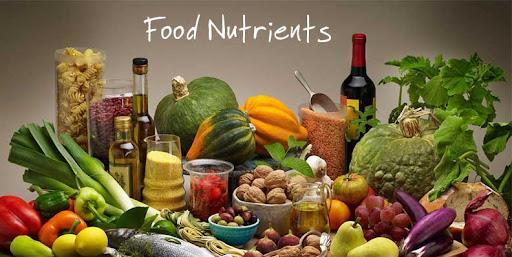
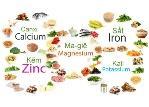
❖ Contents: Students read the text again and do the task.
❖ Products: Students’ answers.
❖ Organization
Exercise 2:
- Students read the text again and decide if the sentences are true or false. They can compare their answers in pairs. (With stronger classes, students could discuss the sentences first and decide if they think they are true or false from memory, then check their answers by reading the text)
- Teacher checks answers with the class. Ask students to explain why the false sentences are not correct.
Exercise 3:
- Studentswork in pairsto read the sentences and write the names of the foods.
- Teacher checks answers with the class.
- minerals (n) (pic.)
- vitamins (n)
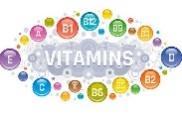
- diseases (n) (expl.)
- fat (n) = lipid (n) (expl.)
- protein (n) (expl.)
- carbohydrates (n) (expl.)
Suggested answers
1 Protein

2 Carbohydrates
3 Vitamins
4 diseases
5 Minerals
6 fat
7 fat
8 Water
Exercise 4:
- Teacherlooks at the dinner plate and check that students know the words for all the things on it.
2. Read the text again. Are the sentences True or False?
Suggested answers
1 False
2 True
3 False
4 True
5 True
6 False
3. Read the sentences and write the names of the food in the text.
Suggested answers
1 butter
2 olive oil
3 milk
4 beans
5 chocolate
DẠYKÈMQUYNHƠNOFFICIAL
- Studentswork in pairsto say what nutrients there are in each food group.
- Teacher checks answers with the class
4. Look at the picture of the dinner plate. What nutrients are there in the five food groups?

Suggested answers
1 vitamins, minerals, water
ACTIVITY 4. PRODUCTION
❖ Aims: Help students consolidate about the time in the different cities.
❖ Contents: Students work in groups
❖ Products: Students’ conversation.
❖ Organization:
Exercise 5:
- Teacherasks two confidentstudentsto read out the example question and answer. Elicit one or two more questions that students will need to ask, (e.g. What carbohydrates do you usually eat? Do you eat meat or fish every day?)
- Students work in pairs to ask and answer questions and complete the table. They then draw a dinner plate for their partner.
- Teacher asks some students to tell the class about their partner’s food and discuss how healthy it is
Optional activity:
- Teacher put students into groups of four. Ask them to imagine they are in charge of their school canteen. Ask them to plan three healthy lunches for students. Tell them they must make sure they include foods from all the different food groups, and their lunches must be tasty! Ask groups in turn to present their ideas to the class. The class could vote for their favourite lunches.
- Students do as directed in group.
ACTIVITY 5. HOMEWORK
- Draw a map
- Do exercises (in workbook).
- Prepare new lesson
2 carbohydrates
3 protein
4 fat
5 protein, minerals
5. USE IT! Work in pairs. What do you eat every day? Ask and answer questions with your partner to complete the table. Then use the information to draw a dinner plate for your partner. Who eats the healthiest food?

(Students’ own answers)

DẠYKÈMQUYNHƠNOFFICIAL
Week :
Period:
Date of preparing:
Date of teaching:
UNIT 5. FOOD AND HEALTH
Lesson 9: Options
Puzzles and games
I./. OBJECTIVES
1. Knowledge: By the end of the lesson, students will be able to:
- revise all knowledge in Unit 5.
- develop students’ skills.
2. Skills: Speaking, listening, reading, writing.
3. Attitude: Students know how to learn English in right way.
DẠYKÈMQUYNHƠNOFFICIAL
4. Competence:
- Solve all games and puzzles individually and in groups.
- Self – revise all the lessons that have been learned.
II./. PREPARATION
1. Teacher: book, planning, TV
2. Students: books, notebooks
III./. TEACHING METHODS
Communicative approach,group Ss and T’s activities,play asa character,teachingmethodswith game, teaching methods by visual, teaching methods by practicing, discussion group, technical present….
IV./. PROCEDURE
1. Check – up: during the lesson
2. New lesson:
Teacher’s and Students’ activities
ACTIVITY 1: WARM-UP
❖ Aims: Help studentsget comfortable with classmates and focus their brains on content of the new lesson.
❖ Contents: Students listen to the song
“I’m hungry”.
❖ Products: Some words about food

❖ Organization:
- Teacherasksstudentsto watch and listen to the song.
- Students listen and they can sing along it.
- Teacher elecit some words about food from the song and then lead in the lesson.
ACTIVITY 2 : KNOWLEDGE FORMATION
❖ Aims: Help studentsrevise the words and some quantifiers they have learnt in Unit 5.
❖ Contents: Students play games
❖ Products: Students’ speaking.
❖ Organization: Exercise 1:
- Teacher reads out the instructions and the example dialogue.
- Students take turns saying a sentence about a type of food for their partner to guess.
(With weakerclasses,students could work in pairsto prepare some sentences,then work in groups offour to read their sentences to each other and guess the words). As an extension, studentscould write one more sentence about
Contents
(https://youtu.be/nqwxYlix7Fw)
1. GUESS THE FOOD. Work in pairs. Look at the words in the box. One student chooses a word and makes a sentence about it. The other student listens and guesses the food.

(Students’ own answers)
2. MEMORY GAME. Play in groups. Make sentences with a, an, a lot of, some and many. Follow the instructions
DẠYKÈMQUYNHƠNOFFICIAL
a different kind of food from pages 62 and 63. Their partner must guess the food.
- Teacher declares the winners are the pairs who guess the most correct words.
Exercise 2:
- Teacherreadsout the example and explains the game.
- Starting at the front of the class, students take turns repeating the list of items and adding one more. If students make a mistake, they are out of the game. Continue until only a few students remain in the game. They are the winners.
- Teacher declares the winners.
ACTIVITY 3: PRACTICE
❖ Aims: Students can use their knowledge which they have revised to do the tasks given as well as develop their skills
❖ Contents: Students find the adjectives abouthealth then complete the “Crosssword” and complete the sentences with V-ing.
❖ Products: Students’ answers
❖ Organization
Exercise 3:
- Students work individually or in pairs to unscramble the adjectives. (Teacher could do this as a race)

- Teacher checks answers with the class.
- As an extension, students could choose three more adjectivesfrom page 66 and write them as jumbled words. They can swap with a partner and try to unscramble the words they have been given.
Exercise 4:
- Students complete the crossword with the oppositesofthe adjectives from exercise 3. –
- Teacher checks answers with the class.
Exercise 5:
- Teacher reads out the example answer and point out that students must add a suitable verb and noun to complete the sentences. (Teacher could do this as a race) (With weakerclasses, teacher could write the verbs and nouns on the board in a jumbled order to help students, e.g. drink, sit, do, play, learn / languages, housework, the sofa, fizzy drinks, tennis)
(Students’ own answers)
3. Find five adjectives about health on the plates. Write the words.

(Students’ own answers)
4. Complete the crossword with the opposites of the adjectives from exercise 3.
Suggested answers
Down: 1 unfit / 2 hungry / 3 ill / 4 lazy
Across: 1 unhealthy
5. Follow the lines and complete the sentences with the verb + -ing.
Suggested answers
1 learning languages

2 playing tennis
3 sitting on the sofa
4 doing housework
5 drinking fizzy drinks
DẠYKÈMQUYNHƠNOFFICIAL
- Students do the task individually.
- Teacher checks answers with the class. (With stronger classes, ask students to write two more sentences about things they like and don’t like doing. Students can compare theirsentencesin pairs.Ask some students to tell the class about their partner)
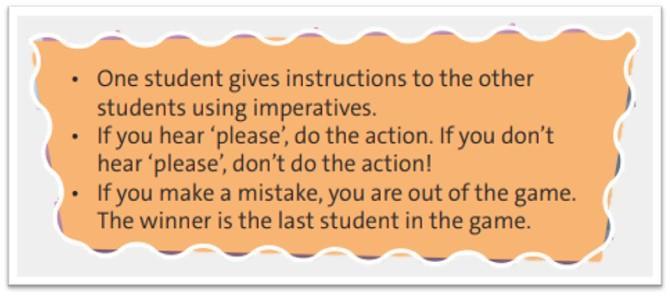
ACTIVITY 4. PRODUCTION
❖ Aims: Help students consolidate the knowledge which they have revised.
❖ Contents: Students play the game.
❖ Products: Students’ speaking.
❖ Organization:
Exercise 6:
- Teacher reads out the instructions for the game and brainstorm some possible instructions, (e.g. Stand up, Sit down, Write your name, Open your school bag). The instructions could also include things that students have to mime, (e.g. Play tennis, Eat a burger)
- Students work in groups to play the game.
- Teacher sets a time limit and see which students are still in the game at the end of that time. Alternatively, teacher could play the game with the whole class. Choose a student to give instructions, or give the instructions yourself. Continue until there is only one student left in the game
ACTIVITY 5. HOMEWORK
- Learn by heart all the new words.

- Do exercises (in workbook).
- Prepare new lesson
* Feedback:
DẠYKÈMQUYNHƠNOFFICIAL
6. THE ‘PLEASE’ GAME. Work in groups. Follow the instructions.
(Students’ own answers)























 – Subodh Gupta –
– Subodh Gupta –












































